
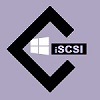
The following table lists device types supported by a selection of iSCSI Targets - based on product information and options available in the User Interface. There may be restrictions based on license type or Target device type - iSCSI Console for example has a maximum size limit of 2047 MiB for RAM Disks.
| Product Name | Virtual Disk (RAW) 1 | Virtual Disk (RAW) Sparse 2 | Virtual Disk (vhd) Fixed 3 | Virtual Disk (vhd) Dynamic 4 | Virtual Disk (vhd) Diff. 5 | Physical Disk. 6 | RAM Disk |
|---|---|---|---|---|---|---|---|
| iSCSI Console | ✔ | ✔ | ✔ | ✔ | ✘ | ✔ | ✔ |
| KernSafe iStorage Server | ✔ | ✔ | ✔ | ✔ | ✘ | ✔ | ✔ |
| SANDeploy | ✔ | ✔ | ✔ | ✔ | ✔ | ✔ | ✔ |
| StarWind Legacy | ✔ | ✔ | ✘ | ✘ | ✘ | ✔ | ✔ |
| StarWind 8 | ✔ | ✔ | ✘ | ✘ | ✘ | ✔ | ✔ |
Screenshot of iSCSI Console running with Administrator privileges, showing available options for Target devices -

Press the Ctrl button to access the (hidden) Create RAM Disk option -
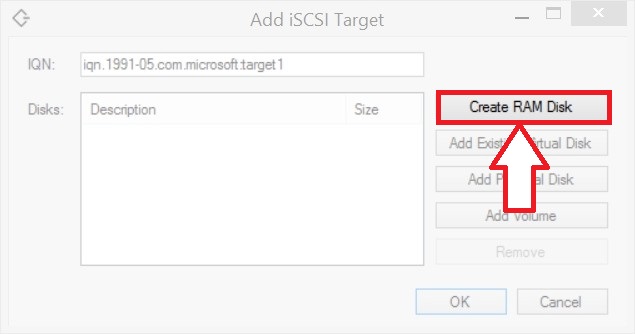
Note that iSCSI Console (version 1.5.1) has a size limitation for RAM Disks - a maximum size of 2047 MiB is supported.
Note that iStorage Server (version 6.0.1600.2280) has a size limitation for RAM Disks - a maximum size of 4095 MiB is supported. A detailed guide covering supported disk types is available here. A comparison of features available in the free license is available here.
Screenshot showing available options for Target storage -

Hard Disk > Image File options (note that .vhdx files are supported) -
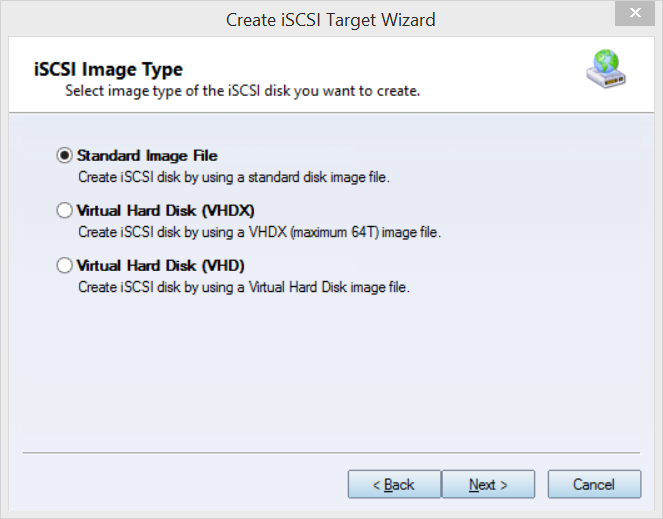
SANDeploy (verison 5.0.3000.1200) Screenshot showing Target device options (note the range of disk image formats supported - including .vmdk) -

Size limitation for RAM Disks is not known - during tests a 10 GiB RAMDisk was created successfully.
StarWind versions 4 / 5.2 / 5.8 /6.0 have been grouped here. Target device options appear consistent accross these versions of StarWind. Sparse type RAW disk images and a 10 GiB RAMDisk were tested successfully using StarWind version 5.2.
StarWind version 5.8 screenshot showing Target device options -
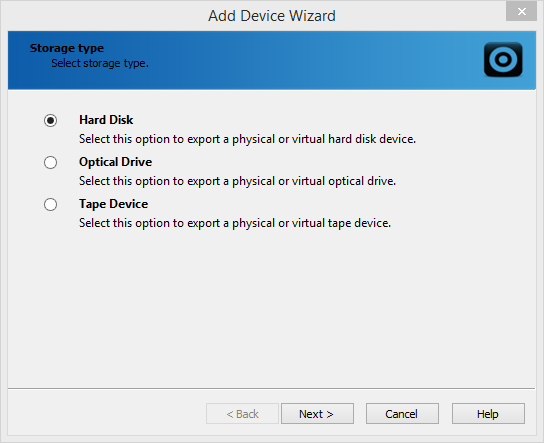
StarWind version 5.8 Hard Disk options. Note that due to a license limitiation the Physical Disk option is not available (FREE License) -
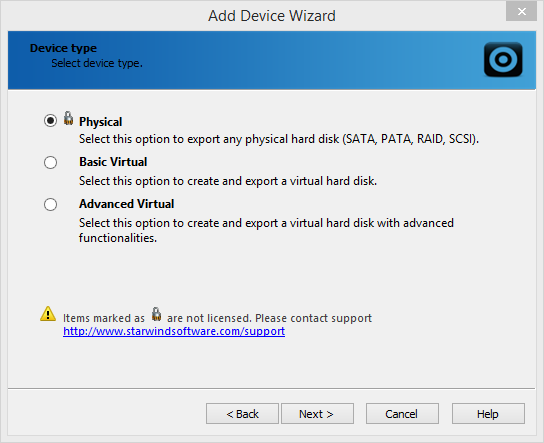
StarWind version 5.8 Hard Disk > Basic Virtual options -
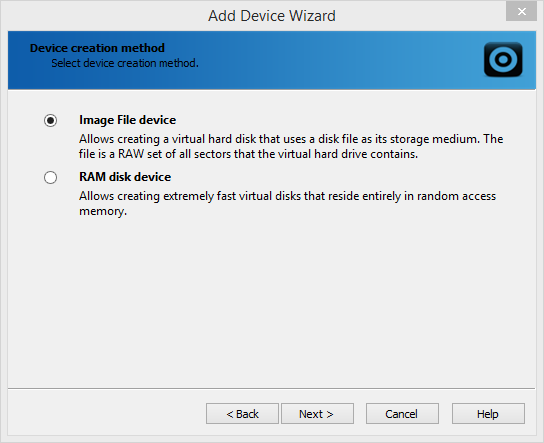
Screenshot of StarWind version 8 Management Console -
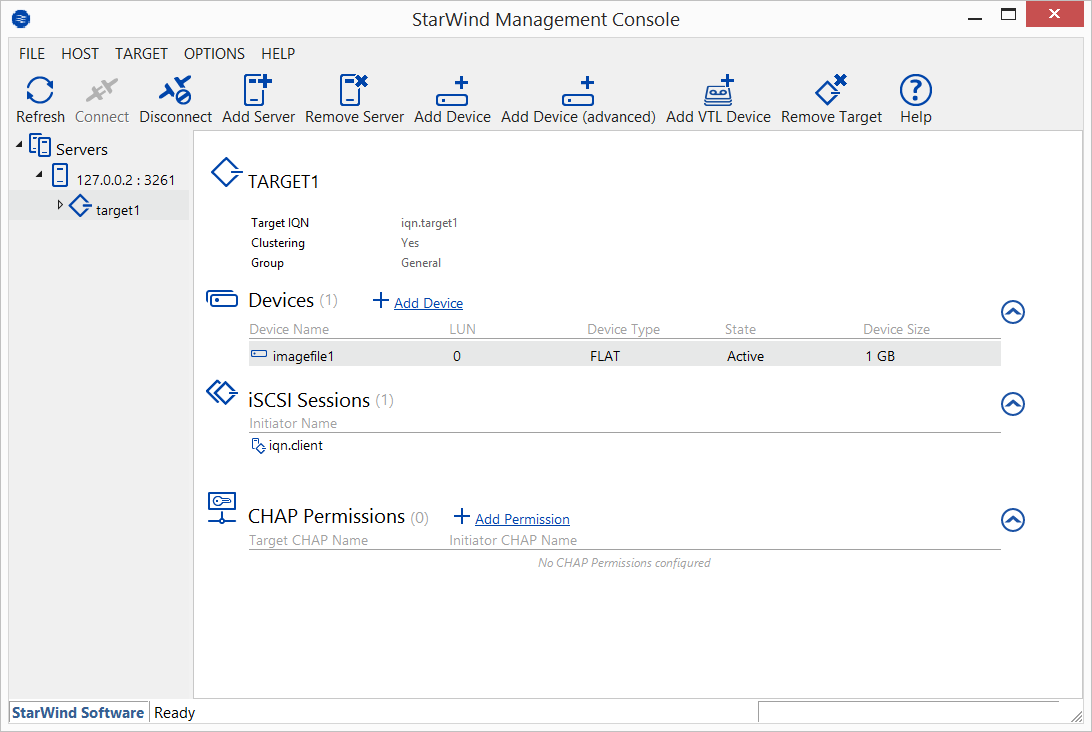
StarWind Target device options -
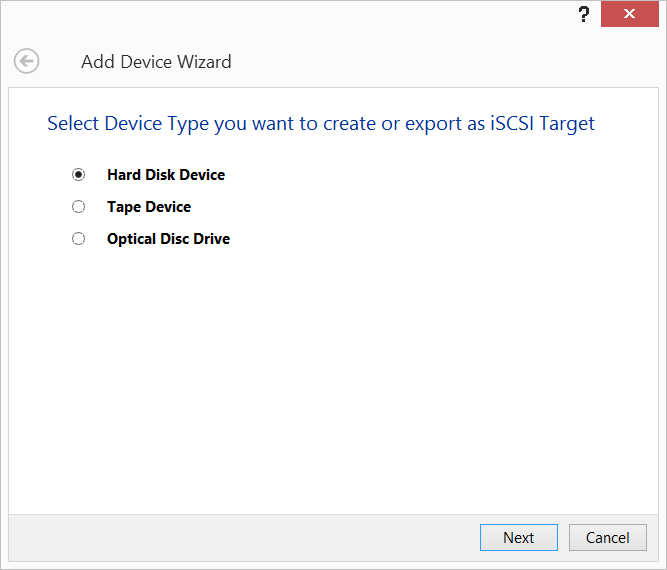
Hard Disk Device > Physical Disk screenshot -
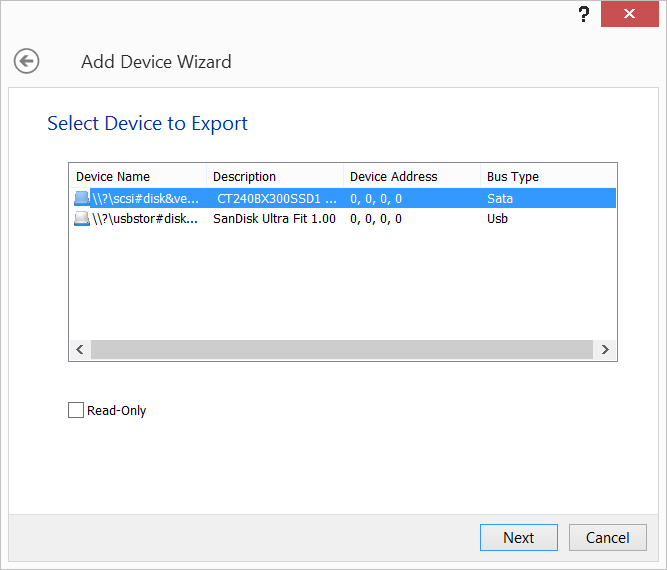
RAW disk images are essentially sector by sector copies of a disk. If a new RAW image is created it will usually contain zeros (00) spanning the extents of the backing file. RAW disk images are widely supported and can be mounted using a range of third party tools. RAW disk images are very similar to Fixed type Virtual Hard Disks, but do not contain a footer with the connectix string written to it. Screenshot displaying file properties for a 1 GiB RAW disk image -

A sparse disk image is a type of disk image file that expands in size as data is written to it. Screenshot displaying file properties for a 1 GiB sparse type disk image -

A fixed type VHD is similar to a RAW disk image, but contains a 1 sector footer with the connectix string written to it. The connectix string is used to identify it as a Virtual Hard Disk - e.g. when mounting the file using the Windows DiskPart application. Fixed type VHD files have a specified size which will not change when data is written to a mounted image - a 10 GiB fixed disk will consequently always be 10 GiB in size on the host file system, regardless of the amount of unused space within it. Fixed disks are recommended by Microsoft in production environments.
A Dynamic type VHD (aka Expandable) will increase in size as data is written to it, up to the maximum size limit specified when it was created. Unlike a fixed disk it will not contain any unused space and consequently takes up considerably less space on the host file system. Expanding disks are recommended by Microsoft for use in nonproduction (e.g. test) environments.
Differencing type Virtual Hard Disks are more complex than either Dynamic or Fixed type VHD files. A differencing disk (sometimes referred to as a Child) is always linked to a Parent disk. This link is hard-coded into the differencing VHD - if the link is broken (e.g. the Parent disk is renamed or moved) then the differencing disk cannot be booted or mounted to retrieve data. The underlying Parent Disk can be a fixed or expanding type disk. Another differencing disk can also be used as Parent, creating a chain of differencing disks. When a differencing disk is created, its size is not specified as it will always have the same maximum size as the underlying Parent disk - or the base disk in a chain of differencing disks.
Hardware or a mounted disk image. A mounted Virtual Hard Disk (.vhd) for example may be listed as a Physical Disk type device in some Targets.
.
Document date - 14th June 2019